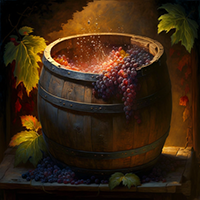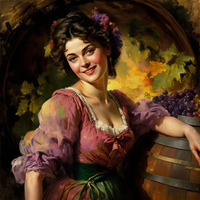Fusel Alcohol, An Important Type of Alcohol and You've Probably Never Heard of It
Posted by Matteo Lahm on 7th Feb 2023
You often read about temperature ranges for fermenting your wines. You probably think this just has to do with yeast activity. Yes, yeast prefers the Caribbean to the mountains however, there is another reason, and it is a much bigger deal than you might think. It has to do with the type of alcohol that is produced. Meet fusel alcohol!
While you may have never heard of fusel alcohol, you know what it tastes like. It is a key component of wines fermented at temperatures above 68 degrees f. The higher the peak of your must temperature, the more fusel alcohol will be in your wine. If you have ever had a wine that fermented too hot and the flavor was overpowering, fusel alcohol was the cause.
Fusel alcohol and ethanol are both produced as a result of the fermentation of sugars, but they are different in structure and flavor. Ethanol is a primary alcohol that is formed during fermentation when yeast breaks down glucose and fructose into ethyl alcohol and carbon dioxide. Ethanol is a small, linear molecule with two carbon atoms and is the most important alcohol in wine. It is responsible for the majority of the alcohol content.

Fusel alcohols, on the other hand, are a group of secondary alcohols with three or more carbon atoms that are formed when yeast ferments complex sugars at higher temperatures. They are structurally different from ethanol and have a higher boiling point, meaning that higher fermentation temperatures are needed for their production. The most common fusel alcohols found in wine are isoamyl alcohol, isobutyl alcohol, and amyl alcohol. These compounds contribute much to the aroma and flavor of the wine, and the concentration and type of fusel alcohols can have a significant effect on the taste.
The molecular structure of fusel alcohol consists of three carbon atoms (C3) and seven hydrogen atoms (H7) bonded to an oxygen atom (OH). This combination of atoms gives fusel alcohols their characteristic chemical formula of C3H7OH. Ethanol, on the other hand, has a much simpler molecular structure, consisting of two carbon atoms (C2) and five hydrogen atoms (H5) bonded to an oxygen atom (OH). This combination of atoms gives ethanol its characteristic chemical formula of C2H5OH.
The fermentation temperature is an important factor in determining the ratio of ethanol to fusel alcohol in your wine. Fusel alcohols are formed more rapidly than ethanol. If your fermentation temperature is too high, the production of fusel alcohol will be accelerated and can overpower the taste of the wine, making it too strong and harsh tasting. On the other hand, if the fermentation temperature is too low, the production of fusel alcohols will be inhibited and the flavor of the wine will be more subtle and the nose more floral. The percentage of fusel alcohol in a red can vary from 0.2% to 2% depending on the fermentation temperatures. While that does not sound like much, consider that wine is about 85% water. 2% fusel alcohol accounts for about 13% of the remaining 15% of what chemically constitutes wine. When you are fermenting, you can consider how you want to restrain or encourage robust fermentation through temperature control. You would want higher levels of fusel alcohol in your big bodied reds and less in your more delicate reds, rosès and whites. Reds like Brunello reach a peak fermentation temperature of 85 degrees F. Some delicate whites like Rieslings can be fermented as low as 45 degrees F. Imagine the difference and you will begin to be able to conceptualize how fusel alcohol tastes and understand its effects.
In conclusion, fusel alcohol and ethanol are both produced during the fermentation process and are important components of wine. However, your fermentation temperatures can profoundly affect their ratio in your wine, thus influencing the flavor. Now you can plan your ferments with more precise temperature control in mind with the understanding that not only will your fermentation temperatures influence your yeast activity, it will even cause changes in the types of alcohols that are produced.

